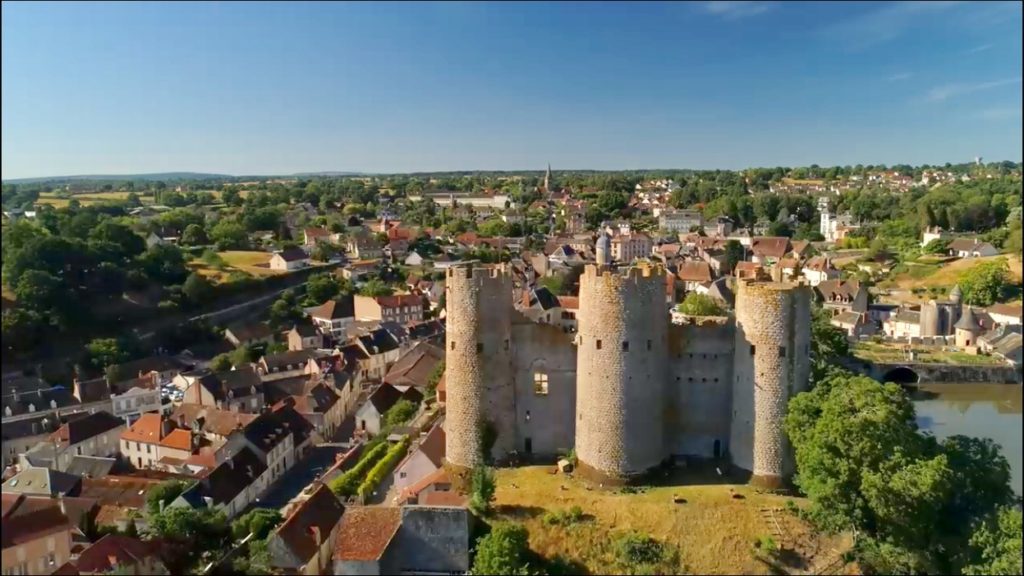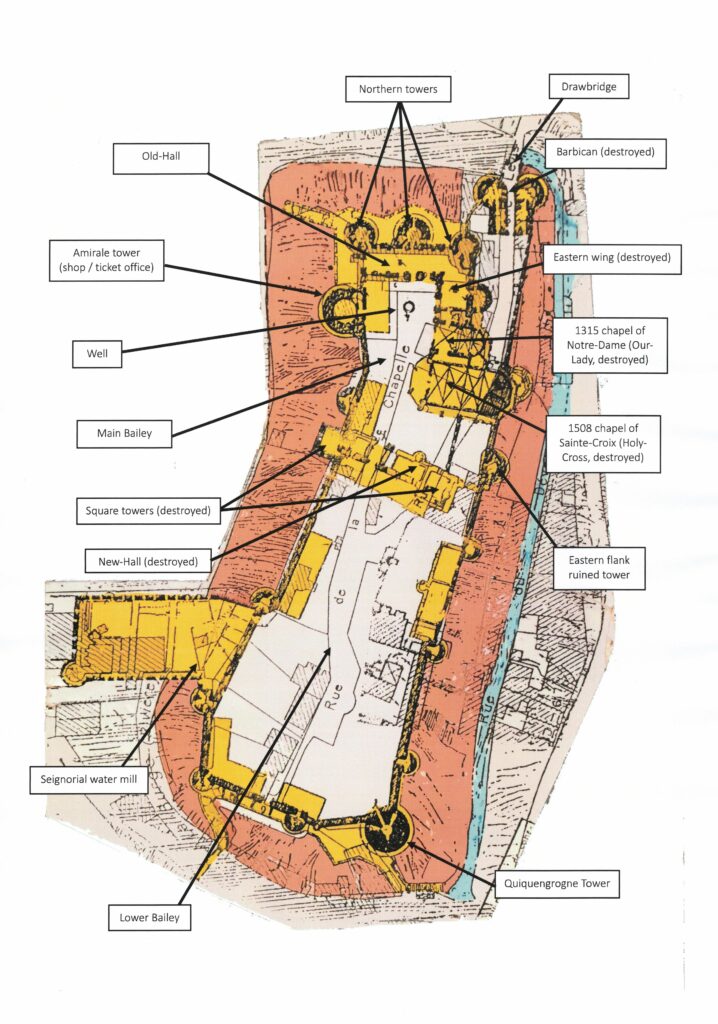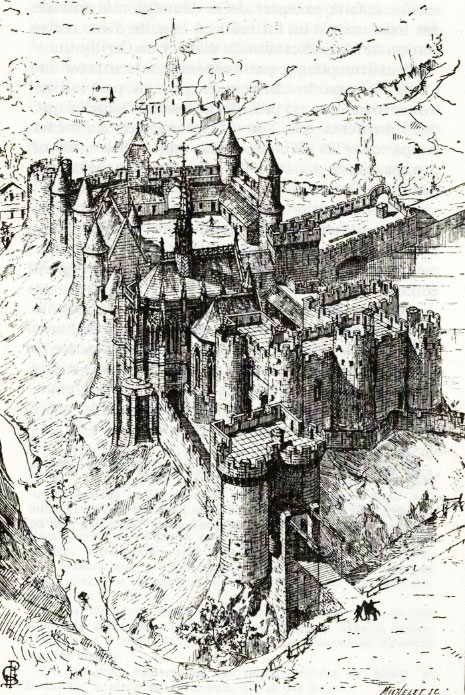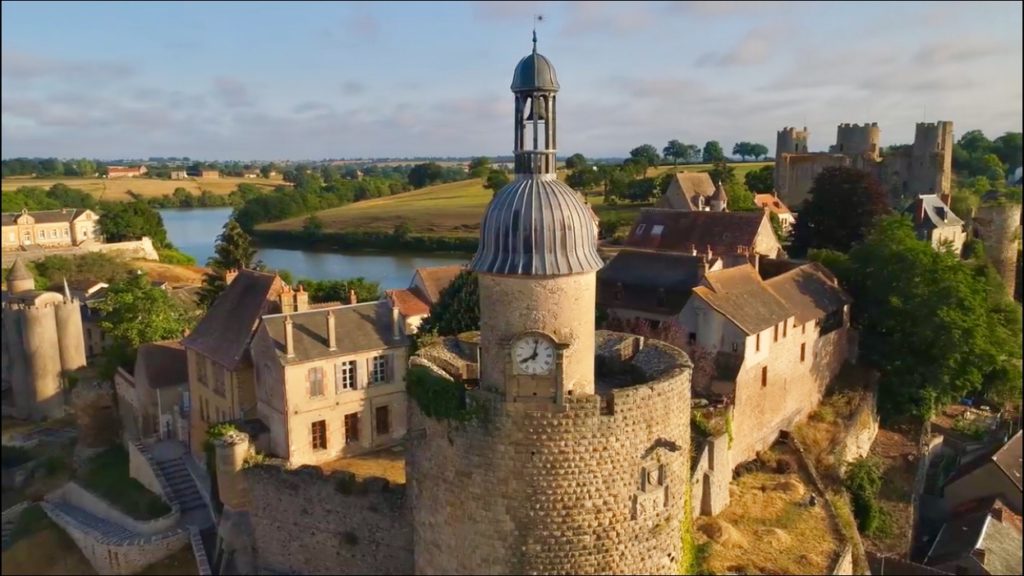
WELCOME TO THE CHATEAU DE BOURBON
The name Bourbon comes from Borvo, the Celtic God of Minerals and healing deity associated with bubbling spring water.
In the Middle Ages, the main name worn by the lords of Bourbon, Archambaud (Arkimbaldus in latin) was added to Borvo.
These lords were the ancestors of every member of the Bourbon family.
The burg now known as Bourbon-l’Archambault comes to life at the crossing point of several very ancient commercial routes.
The castle

The castle of Bourbon is the result of a
long series of building programmes.
Generation on generation, the castle was
modified, fortified and embellished up to the XVIth c.
It shows numerous signs of these long-term
transformations today.
Painted and sculpted decorations from the
early XIIIth are still visible today.
Built on a rocky promontory of nearly one hectare, this « family home » has left us with a particularly beautiful ruin.
A castle emerged on the rocky promontory in the mid Xth century, following a Carolingian castrum. The latter was then rebuilt several times in medieval times and an important work campaign took place in the XIIth century. The towers already had embossed facing, which was reused thereafter in the XIIIth s. and XIVth c., when major building programmes took place under the rules of Louis I – who became the first duke of Bourbon in 1327 – Louis II in the late XIVth c. The latter was the third Duke of Bourbon and Charles V’s brother-in-law. He engaged in substantial building work at the castle, benefiting hugely from the king’s generosity.
These constructions include:
o
the Qui-Qu’en-Grogne Tower,
o
the Amirale
tower (where now stands the site’s reception/shop),
o
rework on the Old-Hall
o
the increased height of the towers and
o
the fortification of the Old-Bailey to the
South (square towers and the New Lodging-house).
Most of these works were never completed.
The second chapel was begun in 1479 in the rule of Jean II, sixth Duke of Bourbon and we know that building work also took place in the XVth c.
© March 2023
Louis II is well-known for having taken part in reconquering the
kingdom in the reign of Charles V (during the first part of the One Hundred-Year
war), for his political role in the reign of Charles VI (he led the Regency
Council and was a member of the Uncles’ Council), as well as for fortifying or
rebuilding his castles and fortresses.
He also ordered the building of a luxury palace at the foot of the Louvre palace in Paris, le Petit-Bourbon, on which he spent a fortune. This marks the beginning of a palatial architecture meant to compete with that of the kings of France and that of the duke’s cousins.

